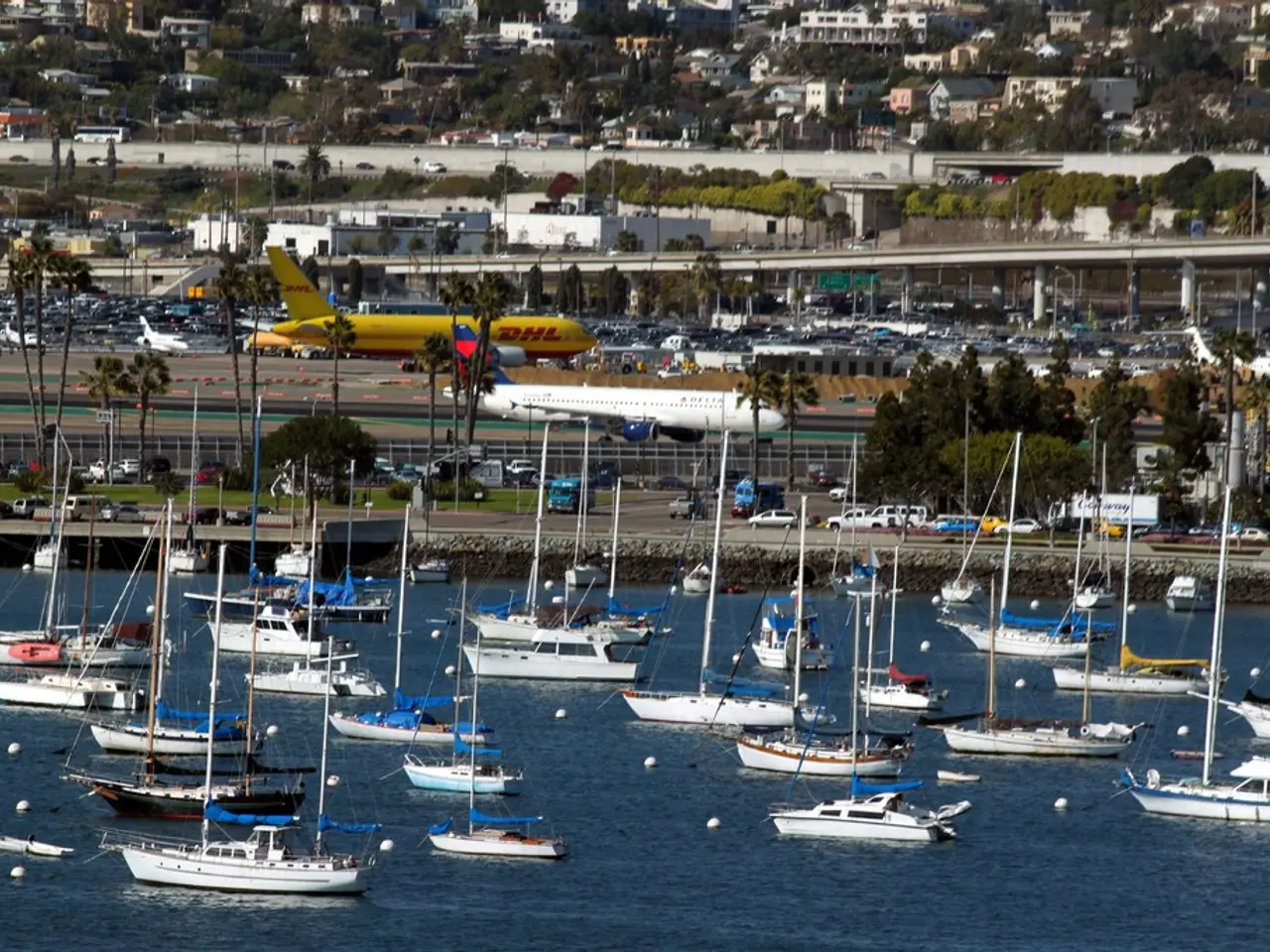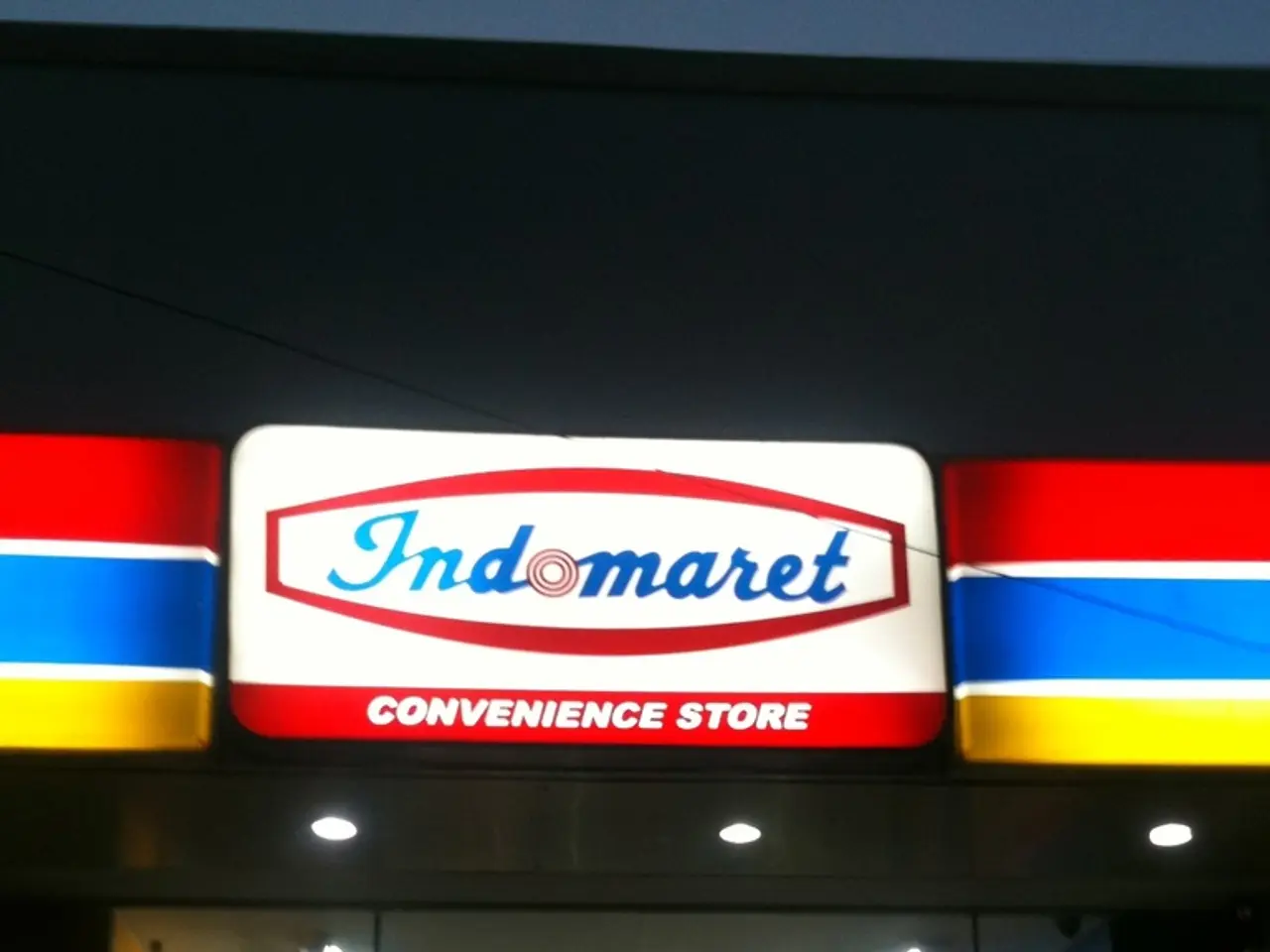Antwerp Port Granted Authority to Approve Unmanned Aerial Vehicle Flights in Regulated Airspace, Marking a First for Non-Aviation Entities
The Port of Antwerp, located in Antwerpen, Belgium, is set to make history by deploying its own Unmanned Traffic Management (UTM) system, marking the first instance of a non-aviation authority serving as a geozone manager under EU drone regulations.
This innovative move will see the port taking control of both the air and ground as they relate to its drone operations, with the UTM system managing UAV traffic and any ground risks associated with above-the-ground drone activity. The system, created to manage drone traffic, will ensure safety and security within the port's airspace, which currently requires permission due to its status as a no-fly zone (controlled airspace) under the EU's Aviation Authority.
Under EU regulations, a geozone manager is responsible for overseeing the application of entry constraints and operational rules within designated U-space airspace or geozones. This includes managing authorizations for drone flights, monitoring compliance with no-fly zone regulations, and facilitating safe drone traffic integration in these controlled airspaces.
In practice, drone pilots will need to request flight authorization through platforms such as the SkeyDrone Planner when operating in geozones. The geozone manager, in this case, the Port of Antwerp, will coordinate and grant these permissions to control drone traffic effectively.
The port has been working closely with technology company Unifly, which has rolled out UTM systems in Belgium, Canada, and Germany, to implement UTM in its airspace. Unifly's CEO, Leon van de Pas, has stated that this close partnership enabled them to develop the new value proposition UTM Seaports in record time.
The Port of Antwerp plans to use drones primarily for surveillance and security purposes, including monitoring incidents such as oil spills. The University of Antwerp will utilise oil spill images collected by drones to develop algorithms to automatically detect oil incidents. The images collected by drones are also useful to Port Authority Officers and can be accessed remotely by emergency and security services via a secure connection.
The community forum on the Port of Antwerp's website is available for those excited to share their thoughts about the Port's UTM system. Drones already help port personnel monitor incidents in the port, and aerial surveillance is used by Port Authority Officers in their regular duties.
Under the E.U.'s Aviation Authority, all no-fly zones in Europe fall under the watch of a geozone manager. Geozone managers are responsible for manually approving or rejecting drone flights in no-fly zones within their borders. With the implementation of its new UTM system, the Port of Antwerp will be able to grant these permissions itself.
The Port of Antwerp's UTM system will be overseen by the port and not by the Belgian Civil Aviation Authority. This move is expected to streamline the process of drone operations within the port, enhancing safety, security, and operational efficiency.
Sources:
[1] European Union Aviation Safety Agency (EASA). (2020). U-space services. Retrieved from https://www.easa.europa.eu/sites/default/files/documents/2020-06/u-space-services-explained.pdf
[2] European Union Aviation Safety Agency (EASA). (2019). Regulation (EU) 2019/947 of the European Parliament and of the Council of 23 July 2019 on the establishment of a European Union Aviation Safety Agency and on the change, as regards the aviation system, to Regulation (EC) No 216/2008 of the European Parliament and of the Council. Retrieved from https://eur-lex.europa.eu/legal-content/EN/TXT/?uri=CELEX%3A32019R0947
[3] Unifly. (n.d.). U-space explained. Retrieved from https://www.unifly.aero/u-space-explained/
- The Port of Antwerp, as a geozone manager under EU drone regulations, will oversee the management of drone traffic within its UTM system, ensuring safety and security in its airspace, previously a no-fly zone under the EU's Aviation Authority.
- Drones will be primarily used for surveillance and security purposes, such as monitoring incidents like oil spills, with the University of Antwerp using collected images to develop oil spill detection algorithms.
- Drones in the Port of Antwerp will be managed under the port's UTM system, with drone pilots needing to request flight authorization through platforms like the SkeyDrone Planner and the port granting these permissions.
- With the implementation of the UTM system, the Port of Antwerp will no longer rely on the Belgian Civil Aviation Authority for the oversight of its drone operations, streamlining the process and enhancing safety, security, and operational efficiency within the port.




